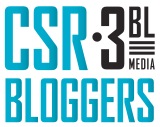A rise in fake green PR? - By Nathan Schock
A blog about communicating sustainability from someone who has spent a fair amount of time doing it.
The kerfuffle over Chevron’s ad campaign and the accompanying spoof ad campaign (see my Inspired Economist post) reminded me that I hadn’t posted anything here about my first contribution to the Public Relations The Strategist. Titled Handling a Fake Twitter Account: @BPGlobalPR Leaves Lasting Impression on Crisis Communications, the article talks about the fake Twitter account that parodied BP’s communications response to the Gulf Oil Spill.
The Strategist article draws on the expertise of Shel Holtz and Kevin Dugan to talk about how BP could have better handled the crisis in the gulf and the rise of @BPGlobalPR on Twitter. With another oil company responding to another spoof communications plan from environmental activists, I thought it might be worth the read.
I was an early one of the 186,000+ followers of @BPGlobalPR on Twitter. How could I not be? In the midst of tragedy in the Gulf, with Jon Stewart enjoying an unfortunately timed vacation, it provided some much-needed comic relief.
But as I followed and chuckled, I was also thinking about what it signified for public relations as it is practiced today. An anonymous person sets up a Twitter account about one of the largest companies in the world that is in the midst of one of the largest crises of reputations in this century. Through biting satire, that anonymous (and free) account quickly amasses ten times the followers of that company (@BP_America), while generating tons of conversation online and off. What lessons should corporate communicators draw from this and this week’s Chevron episode?

